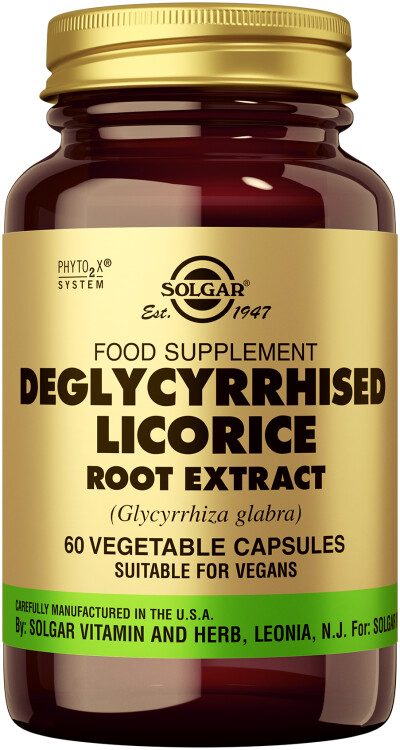8 Best Licorice Root Extract Supplements

- Contains 250 mg standardized extract per capsule
- Standardized to max. 1% glycyrrhizic acid per capsule

- Contains 250 mg licorice root extract standardized to 20% glycerrhizic acid
- In an alfalfa base

- Gut Formula
- Contains licorice, marshmellow extract, slippery elm and aloe vera

- Formula for stressful situations
- Contains, among other things, rhodiola, ginseng, liquorice, schisandra and ashwagandha

- Formula for the nervous system
- According to traditional Tibetan recipe

- Formula for increased energy, for stress and normal hormone balance
- Contains B vitamins, vitamin C, tyrosine, cordyceps, licorice root and zinc

- Formula for digestion
- Contains 21 Tibetan herbs and minerals

- Formula for the ability to concentrate
- Contains zinc, chromium, velvet bean, licorice, ginseng, theanine, N-acetyl-tyrosine and rhodiola
Choose here from two products with only liquorice extract, from Solgar and Viridian and various formula products with other ingredients besides liquorice. Or read more about liquorice first.

Applications
Liquorice is traditionally used to support normal stomach and digestive function*. Findings from modern clinical and experimental studies confirm the validity of these traditional uses.
* EC approval health claim(s) pending.
What is licorice root?
Liquorice (Gancao) is the underground parts, roots and offshoots of the small-growing, hardy Glycyrrhiza shrubs (from the Fabaceae family). Of about 30 different species, 3 species are officially used in Traditional Chinese Medicine as Gancao: the G. glabra L. (grown in southeastern Europe), the G. inflata Bat. (southern Europe and Middle East) and the G. uralensis Fisch. (China).
In European, African, Chinese and Asian cultures alike, this medicinal plant has traditionally been known for its broad spectrum of health-promoting properties. There is even a Chinese medicine theory that says that "9 out of 10 formulas contain licorice root."
The main component of licorice is glycyrrhizin. This is a sweetener that is about 30 to 50 times stronger than sugar (but not harmful to teeth). Glycyrrhizin is cleaved to glycyrrhizic acid, which is then converted to glycyrrhetinic acid by the human intestinal microflora. There are 422 compounds found in Glycyrrhiza in chemotaxonomic studies that fall into five classes; flavonoids, coumarins, triterpenoids, stilbenoids and chalcones (dibenzoylmethanes).
The juice from the root is used as a raw material for licorice, possibly along with the salt salmiac. It is also in drinks such as ouzo and pernod, tobacco, chewing gum, cough syrup, wine gums, throat lozenges and is added to medications to mask the bitter taste.
Interactions
Supplements containing licorice should not be combined with medications for blood pressure and/or medications that target liver function.
